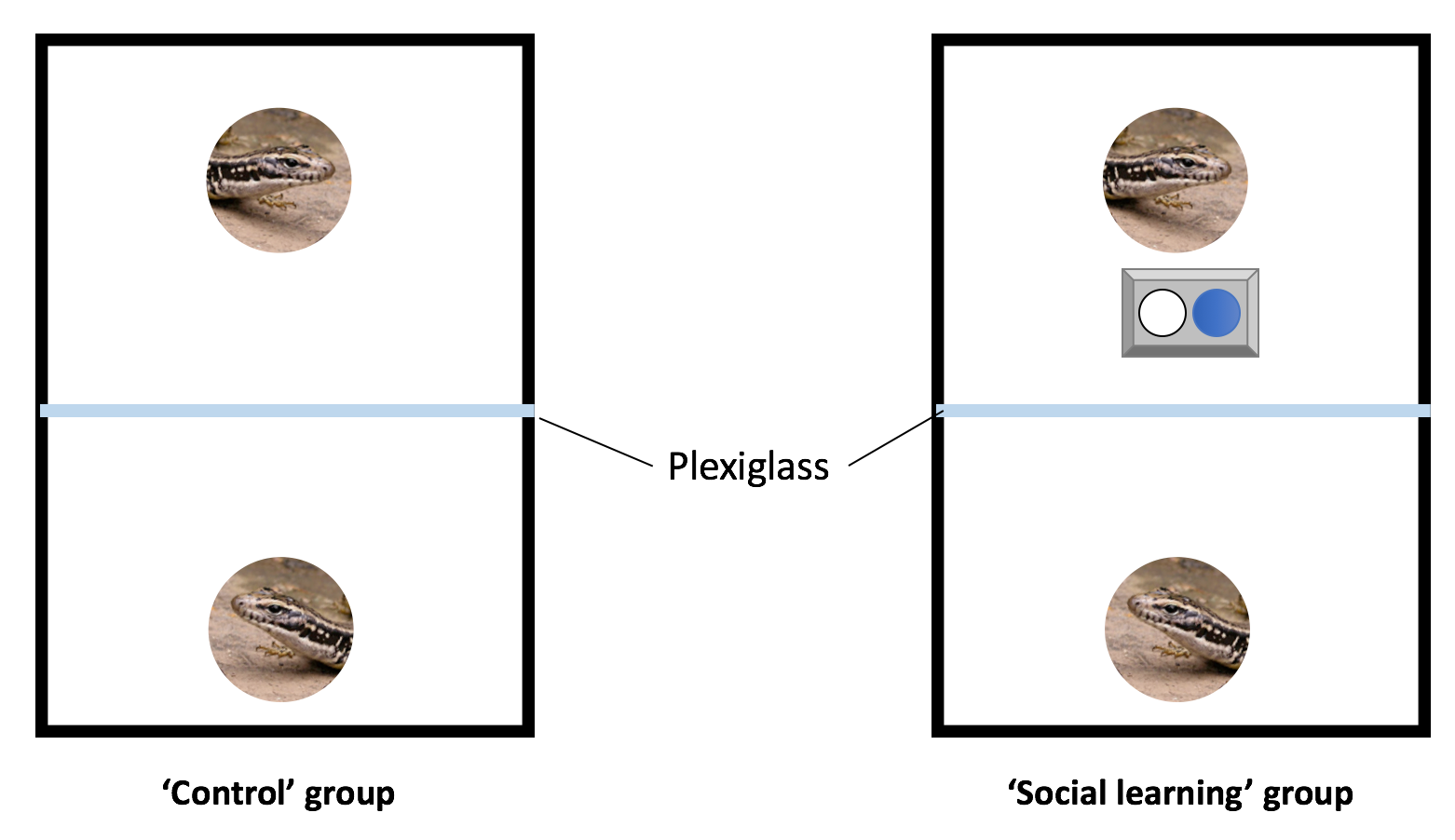By Fonti Kar
Dominant individuals tend to have greater monopoly over food and mates and therefore have more offspring compared to subordinate individuals. Are these successes attributed to greater cognitive ability? Or are dominant individuals just better at freeloading from their clever subordinate counterparts?
We investigated whether dominant and subordinate eastern water skinks differ in their ability to learn from one and other (social learning). Previous work has shown in this species that young skinks tend to learn from older skinks, but age and dominance status and body size are inherently confounded. In other words, the age-dependent pattern may actually reflect a dominance effect, whereby young and therefore subordinate skinks tend to learn from older, dominant lizards.
In order to disassociate these confounding factors, we matched skinks closely in size and therefore age and allowed them to fight to determine their dominance statuses (Fig. 1). Winners of this fight was considered ‘dominant’, while the loser was considered ‘subordinate’. We then divided our skink pairs into two treatment groups, a ‘control’ group, where a skink watched their status counterparts do nothing and a ‘social learning’ group, where a skink was able to watch their status counterpart solve a foraging task e.g. a subordinate skink was able to watch a dominant skink, while a dominant skink was able to watch a subordinate skink (Fig. 2).

Control and social learning group set up. The control group watched their status counterparts do nothing. While the social learning group watched their status counterparts solve a task before receiving the task themselves
We gave the lizards two foraging tasks. In the first task, the lizards had to learn from their status counterparts how to learn to flip a blue lid to access a worm and ignore a white lid (association task). In the second task, the lizards had to unlearn the blue lid-worm association and learn to flip the white lid for the worm (reversal task). We then recorded how many trials it took for skinks to learn these tasks.

In the association task, skinks had to learn to flip the blue lid to access food. They then had to unlearn this association in the reversal task and learn to flip the white lid. See video below!
To our surprise, lizards did not seem to learn from the other lizard but instead relied on their own trial-and-error learning abilities. This was consistent for both dominant and subordinate lizards. We also found that dominant lizards learnt faster compared to subordinate lizards.
These results tell us a few neat things about social learning in the eastern water skink. Firstly, skinks were closely matched in size but they didn’t seem to learn from watching another skink. This seems to suggest that skinks may not want to learn from an individual of similar age and actually this may actually impede learning. Secondly, dominant individuals learnt faster compared to subordinate skinks implies that dominant skinks may be less prone to the stress associated with learning in the presence of another skink or they may indeed have both brains and brawn.
For more information, check out the paper published in Animal Cognition here

Leave a Reply